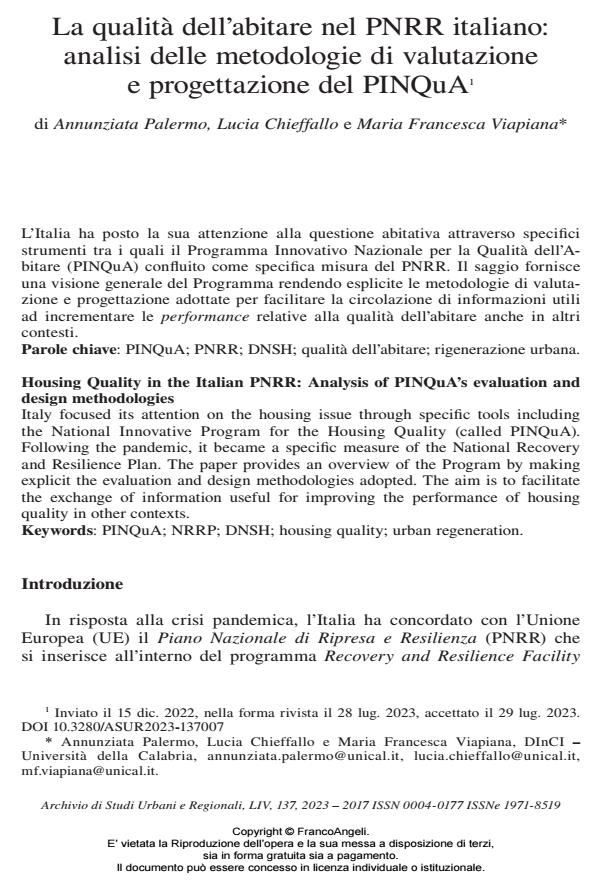La qualità dell’abitare nel PNRR italiano: analisi delle metodologie di valutazione e progettazione del PINQuA
Titolo Rivista ARCHIVIO DI STUDI URBANI E REGIONALI
Autori/Curatori Annunziata Palermo, Lucia Chieffallo, Maria Francesca Viapiana
Anno di pubblicazione 2023 Fascicolo 2023/137
Lingua Italiano Numero pagine 24 P. 133-156 Dimensione file 204 KB
DOI 10.3280/ASUR2023-137007
Il DOI è il codice a barre della proprietà intellettuale: per saperne di più
clicca qui
Qui sotto puoi vedere in anteprima la prima pagina di questo articolo.
Se questo articolo ti interessa, lo puoi acquistare (e scaricare in formato pdf) seguendo le facili indicazioni per acquistare il download credit. Acquista Download Credits per scaricare questo Articolo in formato PDF

FrancoAngeli è membro della Publishers International Linking Association, Inc (PILA)associazione indipendente e non profit per facilitare (attraverso i servizi tecnologici implementati da CrossRef.org) l’accesso degli studiosi ai contenuti digitali nelle pubblicazioni professionali e scientifiche
L’Italia ha posto la sua attenzione alla questione abitativa attraverso specifici strumenti tra i quali il Programma Innovativo Nazionale per la Qualità dell’Abitare (PINQuA) confluito come specifica misura del PNRR. Il saggio fornisce una visione generale del Programma rendendo esplicite le metodologie di valuta- zione e progettazione adottate per facilitare la circolazione di informazioni utili ad incrementare le performance relative alla qualità dell’abitare anche in altri contesti.
Parole chiave:PINQuA; PNRR; DNSH; qualità dell’abitare; rigenerazione urbana.
Annunziata Palermo, Lucia Chieffallo, Maria Francesca Viapiana, La qualità dell’abitare nel PNRR italiano: analisi delle metodologie di valutazione e progettazione del PINQuA in "ARCHIVIO DI STUDI URBANI E REGIONALI" 137/2023, pp 133-156, DOI: 10.3280/ASUR2023-137007